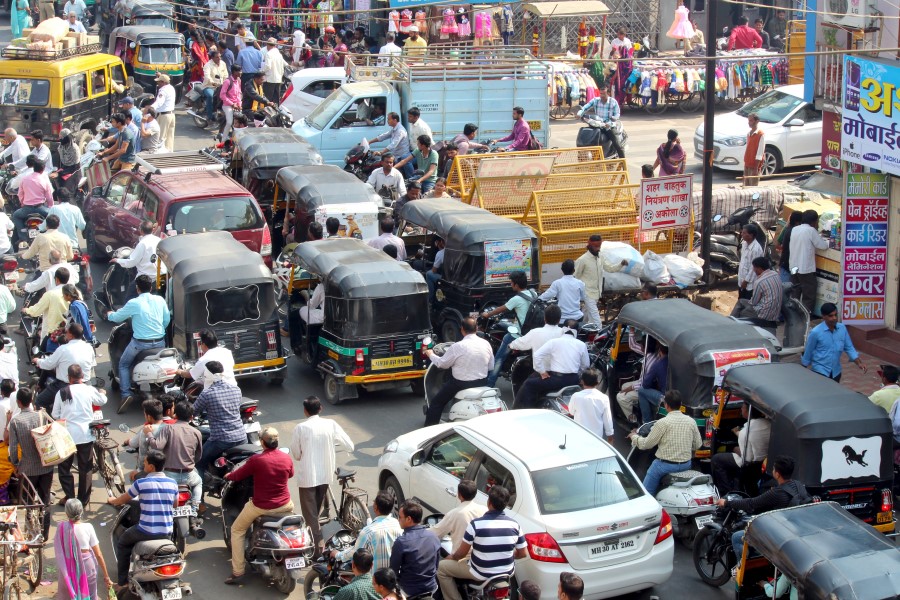Look at a list of countries with the largest populations and you will notice the majority at the top of the list are developing nations – China, India, Indonesia, Pakistan and Brazil. Continue looking down the list and even smaller developing countries will prove to have huge populations – Nigeria, Bangladesh, Ethiopia and the Philippines for example. In fact, there are actually very few developed nations with really big populations. Why is this? Why do developing countries have so many people? Well, let us explain…
Limited Access To Contraception And Abortion
A first reason why developed countries have large populations is because of limited access to contraception.
Family planning and access to contraceptives is directly corelated with lower population numbers. Contraceptives allow women to control their reproductive functions and mean that families have the choice about when to have children.
In developing countries, many people either do not have the money to buy contraceptives, or live in areas where contraceptive methods are not readily available. This results in people having more children and the populations of poorer countries growing.
As well as limited access to contraceptives, a lack of access to abortion is another reason why developing countries have large populations. In many developing countries abortion is illegal. In others, its costs either make it difficult for many women to receive abortions, or abortion clinics are not accessible to much of the population. This is another reason for developing countries large populations.
Lack Of Education
A second reason why developing countries have so many people is because of a widespread lack of education.
A person’s level of education often plays a key role in how many children they have. Studies show that people with less education generally have more children. In poorer countries, education is harder to access. For those that do go to school, the quality of education is also often poor. As attainment in school corelates with having more children, the limited education opportunities in developing nations are one reason why they have larger populations.
People who receive a strong education, especially to high school or college level, often move to cities to work in less manual labor type jobs. Both economic pressures, and lifestyle choices, mean these people often have less children. As developing nations have fewer industrial jobs and more people with lower levels of education, they often have rapidly growing populations.
The poor quality of schooling across much of the developing world, and the wider societal impacts this has, is a significant factor in why developing countries have many people.
More Rural Societies
A third reason why developing countries have large populations is because they are more rural societies.
As a nation develops, people move from the country-side to the cities. This is because industrialisation means that better jobs and higher standards of living become concentrated in urban areas. Countries that develop often see rapid urbanisation.
People in cities generally have less children than those in rural areas. This is because children in cities cost more to house, clothe and school, and in rural communities’ children often assist in farming – essentially providing a source of free labor.
Developing countries have larger rural populations. As they have not industrialized yet, more people remain in villages and small towns and rely on agriculture as their economic activity. As a result, developing countries often have many more children compared to richer nations.

Higher Rates Of Infant Mortality
Another reason why developing countries have large populations is because of their high infant mortality rates.
Infant mortality measures the percentage of children who die before the age of five. In the developed world, this number is around 3.5 for every 1000 births. However, in poorer parts of the world, sadly, this number is much higher. In parts of sub-Saharan Africa, which have some of the highest birth rates in the world, the infant mortality rate is also higher, at nearer to 27 deaths for every 1000 births.
Places with higher infant mortality see higher birth rates. If more children are likely to die, people often have more children. This is true across the developing world and is a key reason why these countries often have more people.
Sudden reductions in infant mortality rates can result in massive population booms. If a country rapidly improves its reproductive care, overall healthcare system, sanitation and child nutrition, often there is a lag before these improvements change cultural attitudes and result in people having less children. However, these improvements lower infant mortality rates meaning more children live past the age of five. This is another reason why many developing countries have growing populations.
Economic Decisions
A further reason why poorer countries often have high populations is because of economic decisions people make.
Everyone in the world makes rationale economic decisions that they decide are best for them in their circumstances. In richer countries, this often means having smaller families as children are expensive, and, essentially, a significant financial commitment. However, in poorer countries, children are often seen as a financial asset, which drives people to have larger families.
In many developing countries people make the economic decision to have more children. In rural areas, children often help with agricultural work, increasing the productive capacity of a farm. In urban areas, children often work to support the family’s income. Although there are campaigns to get children in poorer countries out of work and into school, often people in poorer nations make the rational economic choice to have more children and increase their incomes.
People Have Children Younger
One reason why developing countries have large populations is because people generally have children at a younger age.
In the developed world, many people do not have their first child until their late twenties or even early thirties. However, in developing countries this age is much lower. In fact, in poorer countries in Asia and Africa, the average age women have their first child can be below twenty years old. One result of women starting to have children younger is that they often have more children.
The fact that women across the developing world, on average, begin having children at a younger age is one reason why these countries have more people. Families can be larger if mothers are younger.
Cultural Factors
A final reason why poorer countries have big populations is because of cultural factors.
Each culture is unique in its approach to family and children. However, generally, across the developing world, cultures highly encourage women to have children and for families to be large. This is not such a cultural norm in the developed world. Cultural attitudes can be key in driving people’s decisions and the choice to have many children in developing countries is partly a result of cultural norms.
Many of the factors that result in developing countries having large populations that we have discussed – such as women having children at younger ages, economic choices, or use of contraception, all feed into, and result from, cultural considerations.
Across the developing world, large families are often celebrated and having many children is seen as a blessing. There are a huge range of reasons why developing countries have large populations, but cultural factors are often seen as one of the key drivers.


